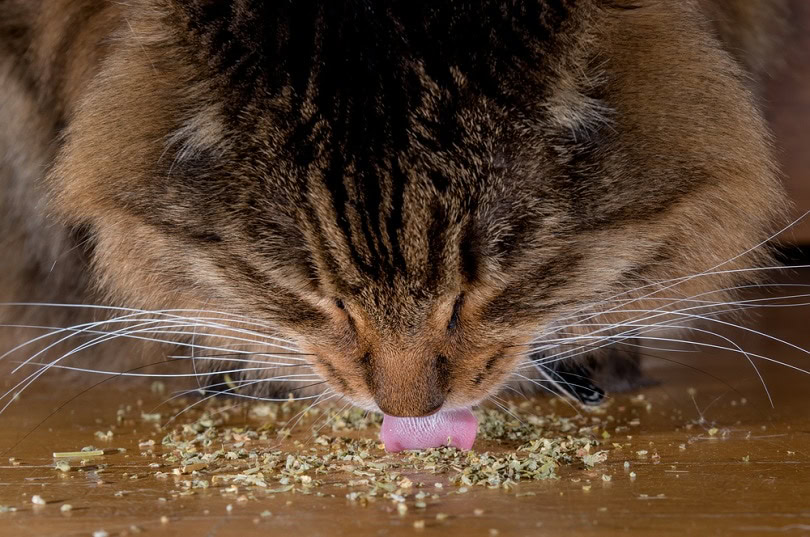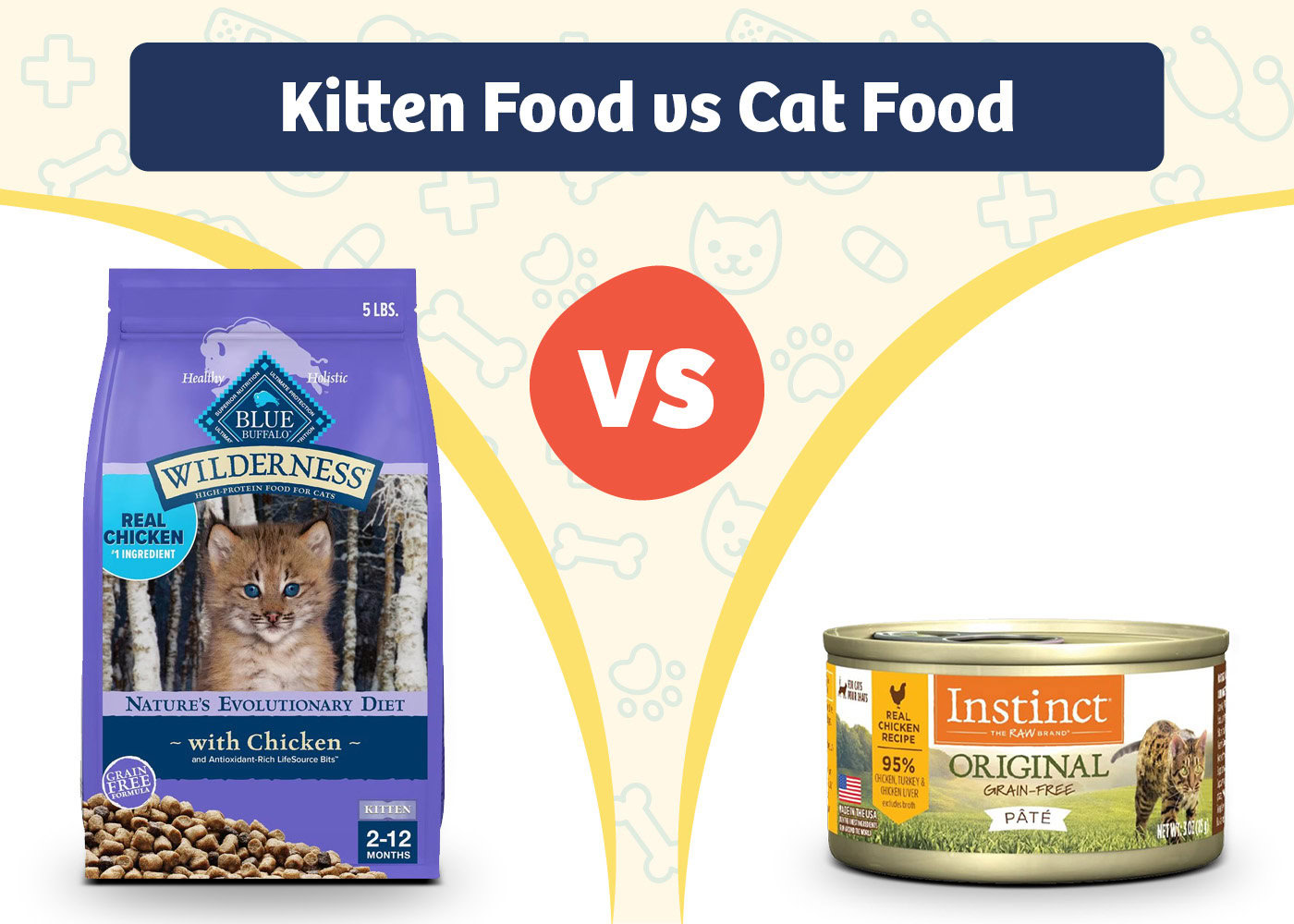VET APPROVED

The information is current and up-to-date in accordance with the latest veterinarian research.
Learn more »Catnip (Nepeta cataria) is a wild perennial plant that you can find growing in almost any well-drained soil, particularly in disturbed areas and along habitat edges. The ingredient that gives it its distinctive smell is nepetalactone.1 This compound serves a vital function for these plants by repelling insects.
Interestingly, the chemical disappeared early in the evolutionary history of the genus, only to re-emerge later. New evidence suggests that it can have a similar use for humans as a chemical that is even more effective than DEET.2
As a member of the mint family, catnip is an aromatic species like others in this group, such as peppermint and spearmint. Scientists theorize that its composition is similar to feline pheromones in how it influences behavior.3 Animals can detect airborne concentrations in as little as a 1:1 trillion ratio. Most cats begin interactions by sniffing the catnip, which often makes them sneeze.
They may eventually eat it, become playful while rolling around, and then fall asleep. It is not harmful to them, nor does it have any sexual significance. Typically, catnip is served dried and plain, but you can also make tea out of it.

Folklore Uses of Catnip & Catnip Tea For Cats
You’ll find catnip in several forms, including dried herbs, aerosol sprays, greens, and stuffed toys. Evidence exists that supports catnip having a few of its alleged health benefits, including antimicrobial activity against fungi and bacteria. That falls in line with the folklore uses of this plant by early settlers and the Ojibwa, Cherokee, and Delaware peoples.
Cats have a superior sense of smell compared to humans, with 200 million scent receptors versus our 5 million. They rely on chemical signals to navigate and feel safe in their environment. Given that the mere scent of catnip can trigger a reaction in cats, it’s reasonable to assume that consuming it in another form, like tea, which concentrates the scent, would also have an effect.
Brewing catnip tea releases an enticing aroma that may pique a cat’s curiosity and encourage them to drink it. This can be beneficial for their hydration, adding to the list of catnip’s potential health benefits, which include enrichment, digestive support, anxiety reduction, and mild pain relief. However, it’s important to ensure the tea has cooled down before allowing the cat to drink it, as they wouldn’t naturally encounter hot tea in the wild.
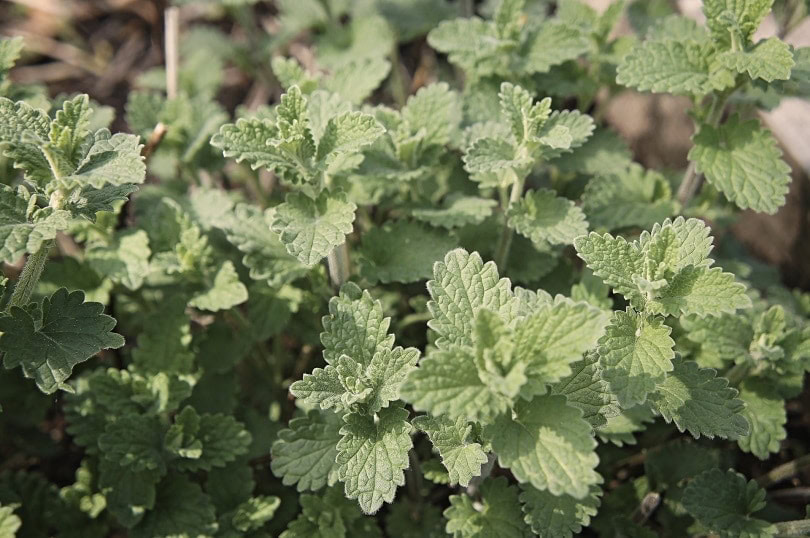
Considerations When Preparing Catnip Tea
Catnip grows wild, so you can easily gather some and dry it yourself. We strongly urge you to vet the location where you collect it carefully, though. Make sure the area isn’t sprayed with pesticides, since many people consider it a weed. You should also find out whether it’s legal for you to harvest plants if you’re going on public land. You can then dry the leaves and keep the tea in a sealed container in the pantry.
The alternative is to get a commercial product where the manufacturer has done this work for you. You can buy it either in bags or loose. We recommend checking the ingredients on the package. You should only buy teas that are 100% catnip. Some companies will often produce blends with other aromatic plants. Ingredients like lemon or mint are toxic to cats. They can cause nausea and GI distress if eaten in large quantities.
The same caution applies to preparing the catnip tea, so do not add a squeeze of lemon. While honey isn’t harmful to cats, it’s high in sugar and can cause an upset stomach.
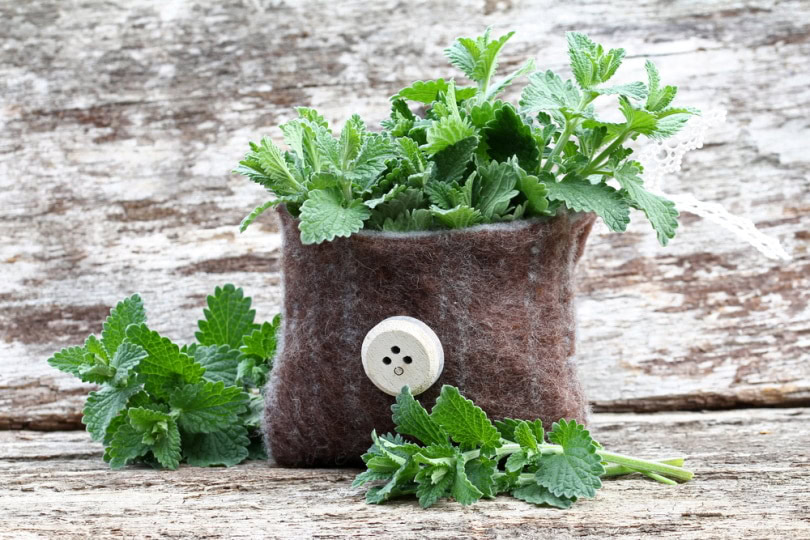
Recipe
The recipe for brewing catnip tea is straightforward.
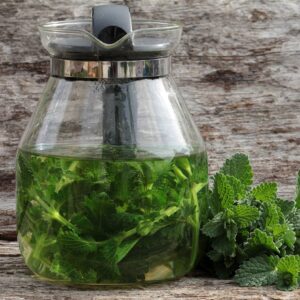
Catnip Tea
Equipment
- Teapot
- Strainer (Optional)
Ingredients
- 2-3 teaspoons Catnip
Instructions
- Put a teaspoon or two in a cup or bowl.
- Add warm water and let it steep for about 3 minutes.
- You can either strain the tea or keep the leaves in the liquid for your kitty to eat.
Notes
Nutrition
Don’t be surprised if your cat drinks more water than they usually do after ingesting catnip. In the wild, felines typically get most of their moisture from their food. However, many pet cats are fed dry, dehydrated food, and many are chronically dehydrated. So the addition of catnip tea may help to change that.


Final Thoughts
While not all of them are susceptible, most felines are attracted to catnip. While its effects vary from cat to cat, and some of the potential health benefits lack scientific studies, it’s satisfying to know that we can give our pets something that they will enjoy and can help them stay hydrated. Just make sure you carefully source your catnip and only serve the tea once it has cooled down to avoid accidents.
See also:
- Catmint vs. Catnip: What Are The Differences?
- Catnip Bubbles and Catnip Wine: A Good or Bad Idea for Your Cat?
Featured Image Credit: Doug McLean, Shutterstock
